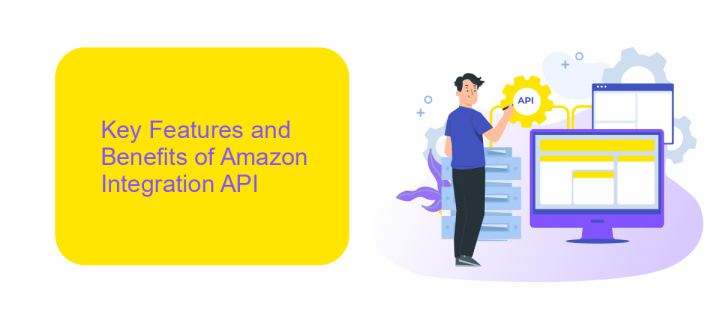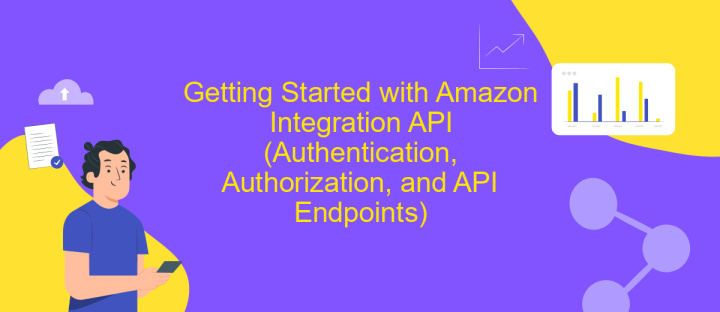Amazon Integration API
The Amazon Integration API is a powerful tool that enables businesses to seamlessly connect their applications with Amazon's vast ecosystem. By leveraging this API, developers can access a wide range of services, from product listings and order management to inventory tracking and customer data. This integration facilitates efficient operations, enhances user experience, and drives growth by streamlining processes and providing valuable insights into market trends and consumer behavior.
Introduction to Amazon Integration API
Amazon Integration API serves as a powerful tool for businesses seeking to streamline their operations on the Amazon platform. By leveraging this API, companies can seamlessly integrate their existing systems with Amazon's vast ecosystem, enhancing efficiency and reducing manual interventions. This integration facilitates real-time data exchange, allowing businesses to manage their Amazon listings, orders, and inventory with ease. As a result, companies can focus more on strategic growth rather than operational challenges.
- Automated inventory management
- Real-time order processing
- Seamless product listing updates
- Enhanced data analytics capabilities
Adopting the Amazon Integration API can significantly benefit businesses by offering a comprehensive solution for managing e-commerce operations. By automating routine tasks, companies can reduce errors and improve customer satisfaction. The API also provides valuable insights into sales trends and customer behavior, enabling data-driven decision-making. Ultimately, this integration supports businesses in maximizing their presence on Amazon, driving growth, and staying competitive in the dynamic e-commerce landscape.
Key Features and Benefits of Amazon Integration API

The Amazon Integration API offers a robust set of features designed to streamline and enhance business operations for sellers and developers. It provides seamless connectivity with Amazon’s vast marketplace, enabling users to automate tasks such as inventory management, order processing, and data synchronization. This integration reduces manual errors and saves time, allowing businesses to focus on growth and customer satisfaction. Furthermore, the API supports real-time data exchange, ensuring that pricing, stock levels, and product details are always up-to-date, which is crucial for maintaining competitive advantage.
One of the significant benefits of using the Amazon Integration API is its compatibility with third-party integration platforms like ApiX-Drive. These platforms simplify the integration process, allowing users to connect Amazon's API with other business tools effortlessly. ApiX-Drive, for example, offers a user-friendly interface that requires no coding skills, making it accessible for businesses of all sizes. This ease of integration helps businesses optimize their workflows, enhance efficiency, and ultimately improve their bottom line. By leveraging the Amazon Integration API, businesses can achieve a more streamlined and effective operational structure.
Getting Started with Amazon Integration API (Authentication, Authorization, and API Endpoints)

To begin using the Amazon Integration API, understanding authentication and authorization is crucial. Authentication ensures that each API request is securely linked to a verified user or application. Amazon uses AWS Signature Version 4 for this purpose, requiring you to sign each request with your AWS access key and secret key. This process guarantees that your data is protected during transmission.
- Obtain AWS credentials: Start by creating an IAM user in your AWS Management Console and generate access keys.
- Configure your environment: Store your access key and secret key securely, preferably using environment variables or AWS SDKs.
- Understand API endpoints: Amazon provides multiple endpoints depending on the region and service. Ensure you select the correct endpoint for your integration needs.
Once your authentication is set up, you can start making API requests. Ensure your requests include the necessary headers and parameters, such as the 'Authorization' header and timestamp. Familiarize yourself with the API documentation to explore available endpoints and their specific requirements. This foundational setup will enable seamless integration with Amazon's vast range of services.
Practical Use Cases and Examples of Amazon Integration API

The Amazon Integration API offers a powerful toolset for businesses looking to streamline their operations and enhance their e-commerce capabilities. By leveraging this API, companies can automate various processes, reduce manual errors, and improve overall efficiency. This integration allows businesses to seamlessly connect their existing systems with Amazon's vast platform, opening up new opportunities for growth and customer engagement.
One of the primary advantages of using the Amazon Integration API is its versatility. It caters to a wide range of business needs, from inventory management to customer service. By providing real-time data and insights, the API helps businesses make informed decisions and stay competitive in the fast-paced e-commerce environment.
- Automating inventory updates to ensure accurate stock levels across platforms.
- Streamlining order processing to enhance customer satisfaction and reduce fulfillment times.
- Integrating customer data to provide personalized shopping experiences.
- Utilizing analytics for better demand forecasting and strategic planning.
In conclusion, the Amazon Integration API is an essential tool for businesses aiming to optimize their operations and expand their reach. By integrating with Amazon's platform, companies can unlock new efficiencies, improve customer experiences, and drive growth in a competitive market.


Best Practices and Troubleshooting for Amazon Integration API
When integrating with Amazon's API, it's crucial to follow best practices to ensure a smooth and efficient process. Start by thoroughly reading Amazon's documentation to understand the API's capabilities and limitations. Implement robust error handling to manage exceptions gracefully and ensure your system remains stable. Regularly monitor and log API requests to identify patterns or issues early. Using a service like ApiX-Drive can simplify integration by providing a user-friendly interface and automating routine tasks, allowing you to focus on more complex aspects of your integration.
Troubleshooting common issues with Amazon Integration API often involves checking authentication credentials and ensuring they are up-to-date and correctly configured. Verify that your API requests comply with Amazon's rate limits to avoid throttling. If you encounter unexpected errors, consult the Amazon developer forums and support channels for guidance. Additionally, ApiX-Drive offers tools to help diagnose and resolve integration problems, providing detailed logs and insights into your API interactions. Regularly updating your integration setup and staying informed about API changes will help maintain a seamless connection with Amazon's services.
FAQ
What is Amazon Integration API?
How do I get started with Amazon Integration API?
What are the common use cases for Amazon Integration API?
How can I ensure secure integration with Amazon API?
Can I automate Amazon API integration without extensive coding knowledge?
Strive to take your business to the next level, achieve your goals faster and more efficiently? Apix-Drive is your reliable assistant for these tasks. An online service and application connector will help you automate key business processes and get rid of the routine. You and your employees will free up time for important core tasks. Try Apix-Drive features for free to see the effectiveness of the online connector for yourself.

